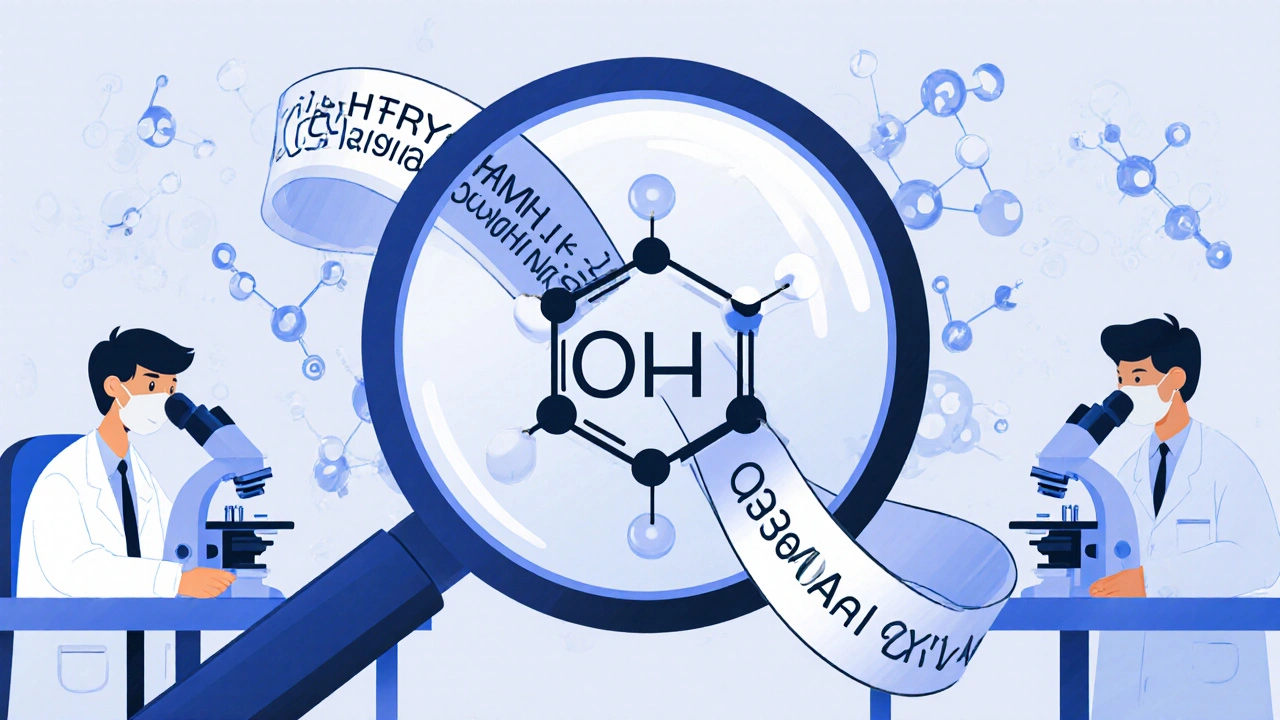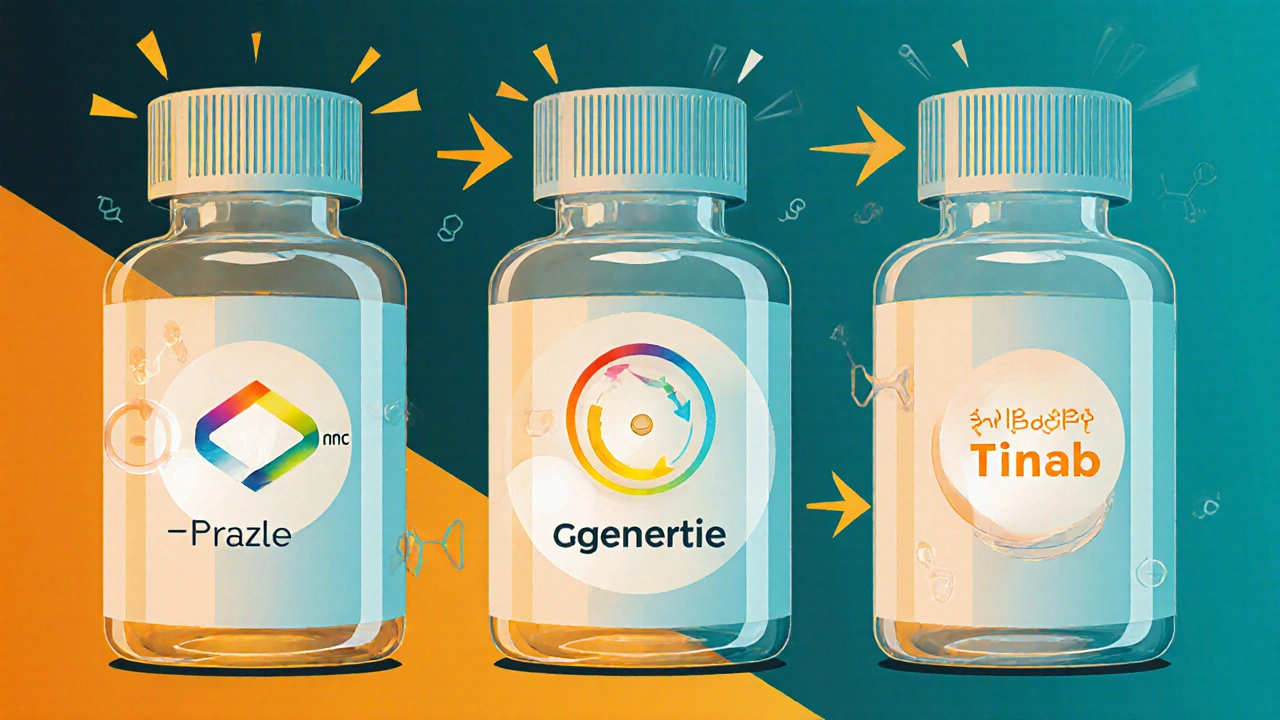Drug Nomenclature: Chemical, Generic, and Brand Names Explained
 Nov, 21 2025
Nov, 21 2025
Have you ever looked at a prescription and wondered why your medicine has three different names? One long, confusing string of letters and numbers. Another short, simple word your doctor says. And a third that sounds like a superhero’s alias? That’s not a mistake. It’s drug nomenclature - a carefully built system designed to keep you safe.
Why Do Drugs Have So Many Names?
Every drug you take has three official names: chemical, generic, and brand. Each serves a different purpose. The chemical name tells scientists exactly what the molecule looks like. The generic name helps doctors and pharmacists quickly identify what the drug does. The brand name is what you see on the bottle - and what companies spend millions to make memorable.Without this system, mistakes happen. The Institute of Medicine found that at least 1.5 million preventable medication errors occur every year in the U.S. alone. Many of those happen because names sound too similar. A patient gets Hydralazine instead of Hydroxyzine. One treats high blood pressure. The other is for allergies. Mix them up, and you could end up in the hospital.
The Chemical Name: What the Molecule Actually Is
This is the most precise name. It’s built using rules from the International Union of Pure and Applied Chemistry (IUPAC). It describes the exact structure of the drug - every atom, bond, and arrangement. For example, the chemical name for the heart medication propranolol is 1-(isopropylamino)-3-(1-naphthyloxy) propan-2-ol. That’s 52 characters long. Try saying that out loud during an emergency.Chemical names are used in labs, patents, and scientific papers. They’re useless in a pharmacy or hospital. No one writes them on prescriptions. But they’re the foundation. Every generic and brand name starts here.
The Generic Name: The Standard That Saves Lives
This is the name your doctor writes on the script. It’s also what you’ll see on the bottle if you buy the cheaper version. Generic names follow strict international rules set by the World Health Organization (WHO) through its International Nonproprietary Names (INN) program. In the U.S., the USAN Council handles this, working with the FDA, AMA, and pharmacists.Here’s the clever part: the ending - called a stem - tells you what kind of drug it is.
- Drugs ending in -prazole (omeprazole, esomeprazole) are proton pump inhibitors - they reduce stomach acid.
- Drugs ending in -tinib (imatinib, sunitinib) are tyrosine kinase inhibitors - used in cancer treatment.
- Drugs ending in -mab (adalimumab, trastuzumab) are monoclonal antibodies - lab-made proteins that target specific cells.
- Drugs ending in -citinib (tofacitinib, upadacitinib) are Janus kinase inhibitors - for autoimmune conditions like rheumatoid arthritis.
The prefix before the stem is unique to each drug. It’s chosen to avoid sounding like any other drug. The USAN Council rejects about 30% of proposed generic names because they’re too close to existing ones. One rejected name? Fluoxetine - because it sounded too much like Fluvoxamine. Both are antidepressants. A mix-up could be dangerous.
Studies show this system cuts medication errors by 27%. Pharmacists rely on these stems. When they see -lukast, they know it’s a leukotriene receptor antagonist - used for asthma. No guesswork.

The Brand Name: The Marketing Machine
This is what you see on TV ads: Prilosec, Viagra, Humira. These are trademarked names owned by drug companies. They’re not random. Companies spend years and millions testing them. They submit 150-200 options to the FDA. About one in three get rejected.The FDA won’t approve a brand name if:
- It sounds too much like another drug (e.g., Zyrtec vs. Zyvox)
- It implies a cure or exaggerated benefit (no “CureAll” allowed)
- It looks like a common word (e.g., “Vitabest” might be confused with a vitamin)
- It’s hard to pronounce or spell
Even the color and shape of the pill matter. Generic versions can’t look exactly like the brand name pill - that’s trademark law. So a blue oval Viagra becomes a white diamond sildenafil. Patients sometimes think the generic is weaker because it looks different. It’s not. Same active ingredient. Same dose. Same effect.
Company Codes: The Hidden Numbers
Before a drug gets a generic or brand name, it has a code. Pfizer uses PF followed by numbers - like PF-04965842-01 for the drug later named abrocitinib. The first eight digits identify the molecule. The last two show the salt form. These codes are used in clinical trials and research. They’re invisible to patients, but they’re how scientists track the drug from lab to pharmacy.
Why the System Matters - Real-Life Impact
In 2022, the FDA recorded 347 medication errors linked to confusion between brand and generic drugs. Most weren’t about the medicine itself. They were about appearance. A patient took a white pill thinking it was their brand, but it was a generic with a different shape. They stopped taking it - and their condition worsened.But here’s the good news: standardized naming has reduced global medication errors by 18.5% since 2010. The WHO estimates over 10,000 INNs have been assigned since 1953. Around 200 new ones are added each year.
Patients still struggle. A 2022 FDA survey found 68% of patients find generic names confusing. The average generic name is 12.7 characters long - hard to remember. But 83% of pharmacists say the system makes their job safer. They know exactly what a drug does just by the ending.
What’s Changing Now?
Drug science is moving fast. New types of medicines don’t fit old rules. RNA-based therapies? Peptide-drug conjugates? The WHO added new stems in 2023: -siran for RNA drugs and -dutide for peptide conjugates.The USAN Council now uses AI to screen names. It checks 15,000 existing drug names in milliseconds for sound-alikes or look-alikes. In its first year, it cut confusion risks by 42%.
Next up? Targeted protein degraders. These drugs are designed to break down harmful proteins in the body. Their new stem? -tecan. By 2030, this class could make up nearly 5% of all new drugs.
What You Should Know as a Patient
You don’t need to memorize all this. But here’s what helps:- Generic drugs work the same as brand names. Same active ingredient. Same strength. Same effect.
- Don’t assume a different shape or color means it’s weaker. It’s just a different manufacturer.
- If you see a drug ending in -prazole, -tinib, or -mab, you can guess its purpose. Ask your pharmacist to explain the stem.
- If a new drug name sounds too similar to one you already take - speak up. Tell your doctor or pharmacist. They’ll check for risks.
The system isn’t perfect. But it’s the best we have. It’s built on decades of data, mistakes, and lives saved. Every time you take a pill, you’re benefiting from a global effort to make sure you get the right one - every single time.